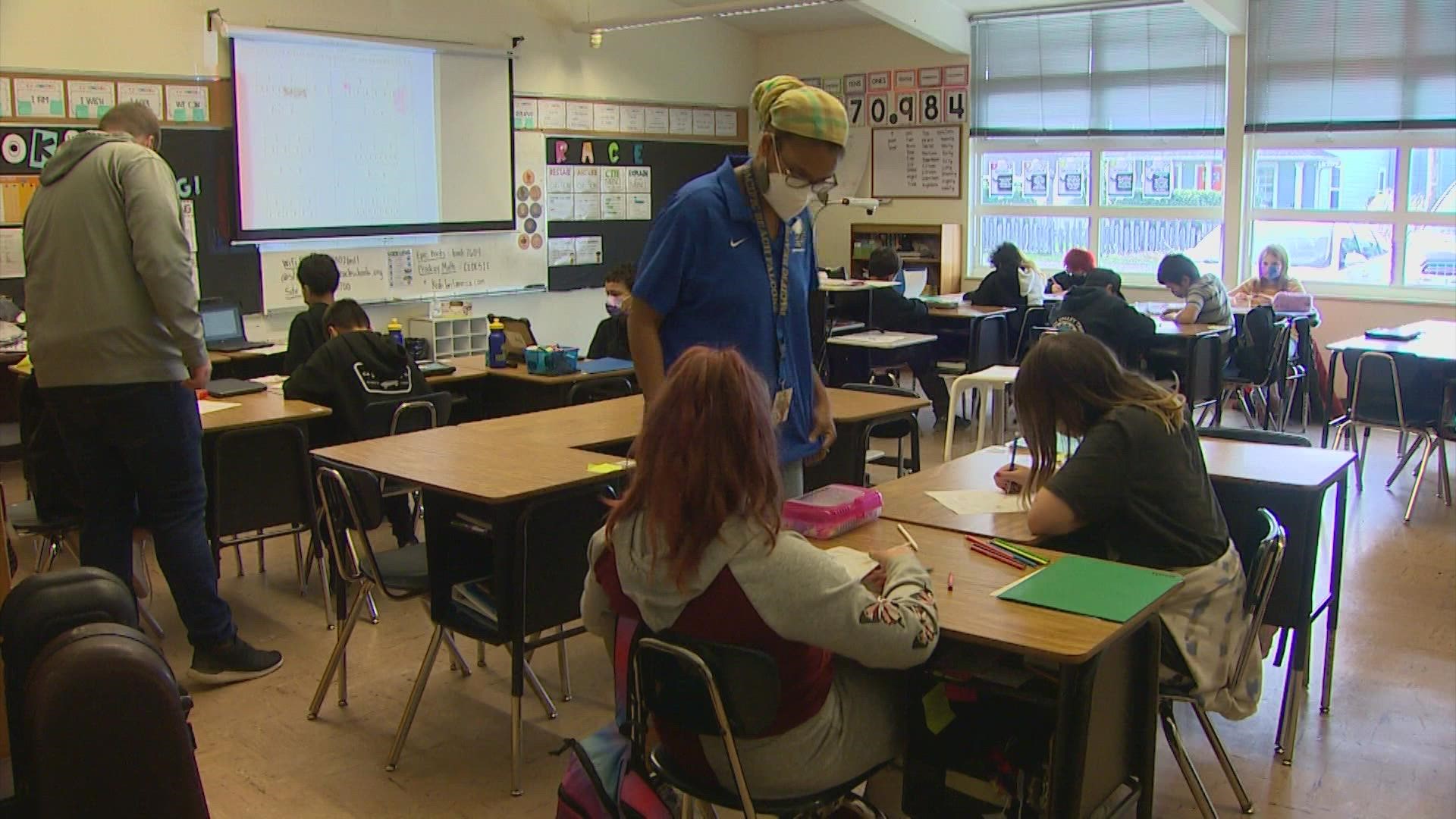SEATTLE — Will your kids be safe in school during an earthquake in Washington state?
That’s a question the state has been wrestling with for years now, as more coming in raises questions about how well our schools will stand up to not only shaking, but weak soils that could liquify underneath buildings and buildings that are vulnerable to tsunami waves.
“We’re going after the highest risk buildings in the districts with the least ability to deal with them,” said Tyler Muench, with the Office of the Superintendent of Public of Instruction (OSPI).
The OSPI, along with the Washington Geological Survey, which is part of the Department of Natural Resources, surveyed 561 school buildings in Washington state - focusing on some of the most seismically-vulnerable areas and most vulnerable school districts.
Muench spoke virtually to the House Capital Budget Committee, which is assessing how much more needs to be spent as the state chips away at an existing list of 71 schools from the Washington coast, up to Ferndale, and down to Snohomish and Pierce counties that are considered “Very High Priority School Buildings.” Structural engineers and seismic experts are looking at the ground beneath the schools during two phases of assessment.
The School Seismic Safety Project Legislative Report for the 2019-2021 session is still an active document, having looked at 561 of the most concerning school buildings out of some 4,000 school buildings across the state. A number of school buildings east of the Cascades are also considered vulnerable.
But there is progress. The OSPI told the committee a seismic retrofit to strengthen Edison Elementary in the Centralia School District is now fully installed. The current budget request to complete six more retrofits depends on the allocation of another $8.5 million.
Schools in Marysville and Cosmopolis are also on that list.
Yet, the OSPI also advocates for changes in the way school seismic needs are funded. Although several million dollars in state funding was destined to help retrofit the 66-year-old Pacific Beach Elementary on Washington’s coast, the problem is far bigger because of the soil the school sits on and the risk that it would find itself under nearly 30 feet of water in a tsunami generated by a magnitude 9 earthquake along the Cascadia Subduction fault running off the Washington coast. Such an earthquake and tsunami would be similar to what happened off the coast of northeastern Japan in 2011.
Pacific Beach Elementary is in the North Beach School District, which is asking its voters to approve a school levy on Feb. 8. The money would pay for a new seismically strong elementary school out of reach of tsunami waves and provide tsunami evacuation structures for two more schools in Ocean Shores.
Muench with the OSPI pointed out to the committee that more rural districts often have lower home values and a lower tax base, making it harder to raise money to make schools safer on their own.

